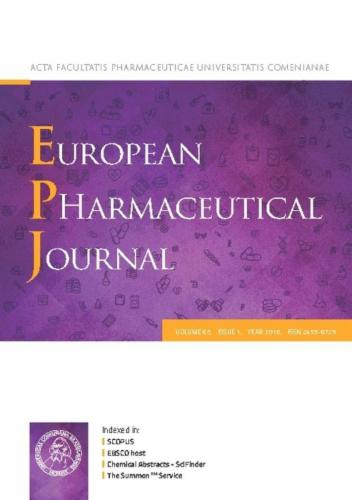Rheological and physicochemical optimization of hydrogels as potential vitreous body substitutes for in vitro release testing
IF 4.7
3区 医学
Q1 PHARMACOLOGY & PHARMACY
引用次数: 0
Abstract
Due to an aging society and the associated increase in age-related eye diseases of the posterior segment of the eye, an optimized in vitro vitreous model would be beneficial to assess drug release and distribution in preclinical dosage form development. A key component in such a test system is a compartment simulating the vitreous body. Several hydrogels have been proposed for this purpose. In this work the rheological properties of several vitreous body substitutes based on hyaluronic acid, hypromellose, polyacrylamide, gellan gum in combination with hyaluronic acid, and hyaluronic acid in combination with agar were investigated. By systematically comparing these potential in vitro vitreous body substitutes with porcine vitreous bodies within one study employing a series of rheological characterizations, a direct comparison was achieved, allowing opportunities for optimization to be identified. The main characterization focused on the viscosity and loss factor in the linear viscoelastic region and, for the most promising gels, also on the behavior in frequency sweeps. Additionally, the recovery times, pH values, and osmolalities of the gels were determined. Initially, phosphate-buffered saline, which served as the basis for the hydrogels, was successfully adjusted to match the pH and osmolality of porcine and human vitreous bodies. Gels made from gellan gum-hyaluronic acid and hyaluronic acid-agar proved most promising. These could be adjusted in concentrations of 0.034 % gellan gum & 0.264 % hyaluronic acid or 0.22 % hyaluronic acid & 0.09 % agar to match both the viscosity of the vitreous body and the loss factor in the linear viscoelastic region. Additionally, the pH values, osmolalities, and behavior in frequency sweeps of the gels were also comparable to the vitreous body, as these exhibit physicochemical gel formation mechanisms and reversibly linked frameworks probably similar to those of the vitreous body. Under the measurement conditions used here, the gels can therefore be considered as good in vitro vitreous body substitutes. Further diffusion studies, which will likely be influenced by the adjusted rheological properties, should be conducted in the future to further investigate the suitability of the optimized gels presented here.

体外释放试验中潜在的玻璃体替代品水凝胶的流变学和物理化学优化
随着老龄化社会的发展,眼后段老年性眼病的增加,优化体外玻璃体模型有助于临床前剂型开发中评估药物的释放和分布。这种测试系统的关键部件是模拟玻璃体的隔室。为此提出了几种水凝胶。本文研究了透明质酸、羟丙纤维素、聚丙烯酰胺、结冷胶与透明质酸结合、透明质酸与琼脂结合等几种玻璃体替代品的流变学特性。在一项采用一系列流变学表征的研究中,通过系统地比较这些潜在的体外玻璃体替代品与猪玻璃体,实现了直接比较,从而确定了优化的机会。主要表征集中在线性粘弹性区域的粘度和损失因子,对于最有前途的凝胶,也关注频率扫描的行为。此外,测定了凝胶的恢复时间、pH值和渗透压。最初,作为水凝胶基础的磷酸盐缓冲盐水被成功地调整为与猪和人玻璃体的pH和渗透压相匹配。由结冷胶-透明质酸和透明质酸-琼脂制成的凝胶被证明是最有前途的。这些可以在0.034%的结冷胶浓度下进行调整;0.264%玻尿酸或0.22%玻尿酸0.09%的琼脂来匹配玻璃体的粘度和线性粘弹性区域的损失因子。此外,凝胶的pH值、渗透压和频率扫描行为也与玻璃体相当,因为它们表现出与玻璃体相似的物理化学凝胶形成机制和可逆连接框架。在这里使用的测量条件下,凝胶因此可以被认为是良好的体外玻璃体替代品。进一步的扩散研究可能会受到调整后的流变性能的影响,应该在未来进行进一步的研究,以进一步研究优化后的凝胶的适用性。
本文章由计算机程序翻译,如有差异,请以英文原文为准。
求助全文
约1分钟内获得全文
求助全文
来源期刊
CiteScore
9.60
自引率
2.20%
发文量
248
审稿时长
50 days
期刊介绍:
The journal publishes research articles, review articles and scientific commentaries on all aspects of the pharmaceutical sciences with emphasis on conceptual novelty and scientific quality. The Editors welcome articles in this multidisciplinary field, with a focus on topics relevant for drug discovery and development.
More specifically, the Journal publishes reports on medicinal chemistry, pharmacology, drug absorption and metabolism, pharmacokinetics and pharmacodynamics, pharmaceutical and biomedical analysis, drug delivery (including gene delivery), drug targeting, pharmaceutical technology, pharmaceutical biotechnology and clinical drug evaluation. The journal will typically not give priority to manuscripts focusing primarily on organic synthesis, natural products, adaptation of analytical approaches, or discussions pertaining to drug policy making.
Scientific commentaries and review articles are generally by invitation only or by consent of the Editors. Proceedings of scientific meetings may be published as special issues or supplements to the Journal.

 求助内容:
求助内容: 应助结果提醒方式:
应助结果提醒方式:


